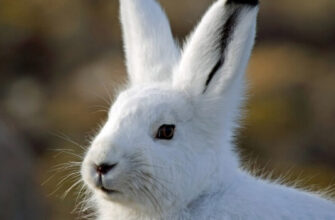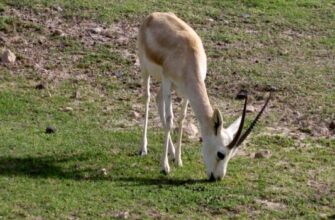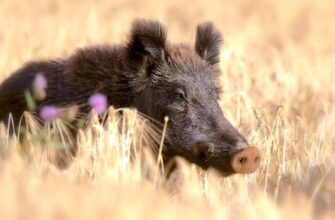The maned wolf is a carnivorous animal from the canine family. It is now believed that such a wolf is a unique representative of its kind and very interesting because of its unusual appearance. The maned wolf is very similar to the red fox with slender and very long legs. Also known as guar, maned wolf, aguarachay, which translated from Greek into Russian means “a dog with a short golden tail.”
Origin of the species and description
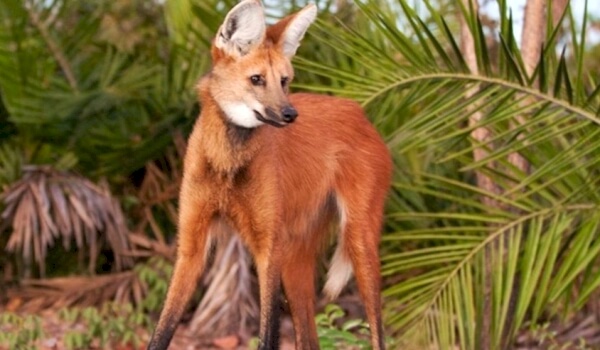
In addition to the fact that there are significant similarities in appearance between the fox and the maned wolf, they have no other correspondences. They are not blood relatives. Scientists noted that most likely its roots originate from the ancient South American canines that lived during the Pleistocene period (ended 11.8 thousand years ago BC).
Video: Maned wolf
As already noted, aguarachai comes from the canine family, which combines predators of fairly large or medium sizes. Basically, the body length in representatives of this genus reaches 170 centimeters. Thick fur, long tail, non-sharp claws, erect ears, long head are the main features of their genus. Also, they have 5 toes on their front paws, but only 4 on their hind legs. The coat color can be of various shades: red, spotted, dark, black, gray, light, and so on. They have a well-developed sense of smell, hearing, and vision. Can run at 60 — 70 km/h
Appearance and features
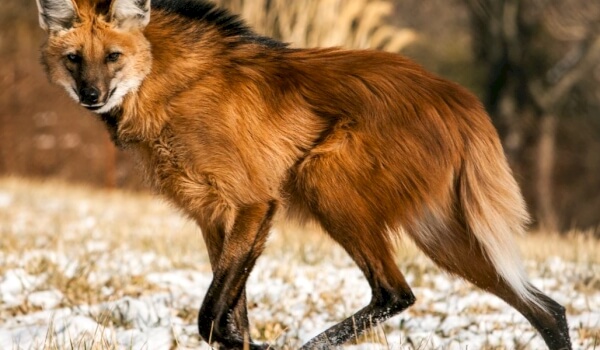
Photo: Maned Wolf
It differs from its relatives in that it is more like a fox. He has long and very slender legs. The body length is relatively small (about 140 cm), weight is approximately 25 kg. He has 42 teeth, like all wolves. General coat color: red, red-yellow. There is long hair down the middle of the back and near the back of the neck. Their color can be both dark and black shades. The lower parts of the legs are black. The muzzle is long and dark shades.
The fluffy long tail is most often light yellow in color. The coat is quite softer than that of ordinary dogs. The ears are straight and rather large, and the eyes are small with round pupils. The figure of this wolf is very disproportionate. The perception of various smells and hearing in the guar is very well developed, but the eyesight is slightly worse.
Its feature is long and slender legs. They help to walk in places where there is very tall grass. According to scientists, the legs in the process of evolution became longer when the animals adapted to the place of their new habitat.
But the running speed of the guar cannot boast. You ask why, because she has such long legs? The reason is that the lung capacity is very small, which prevents the animal from running very fast. The life expectancy of a guar is about 17 years, but in captivity the animal can die even at the age of 12 years. However, there are cases that can live up to 15 years.
Where does the maned wolf live?
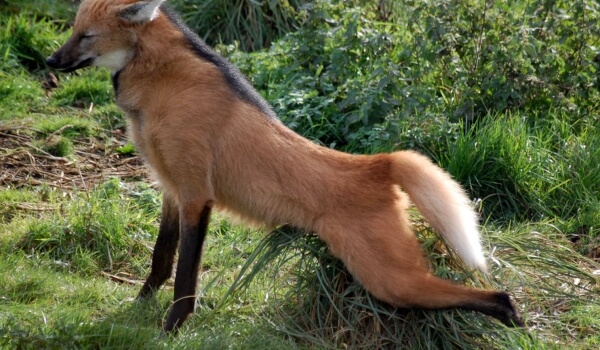
Photo: Animal maned wolf
The maned wolf can be found in the countries of South America, in the state of Mato Gosu, Northern Paraguay, in the central and northeastern parts of Brazil, and eastern Bolivia. It was once common in Argentina. The maned wolf is more adapted to temperate climates. Wolves of this species do not live in the mountains.
The main places where the animal lives or can be found:
- The edges of the forest;
- Places with tall grass or bushes;
- Pampas;
- Flat areas;
- Marshy margins overgrown with vegetation.
What does a maned wolf eat?
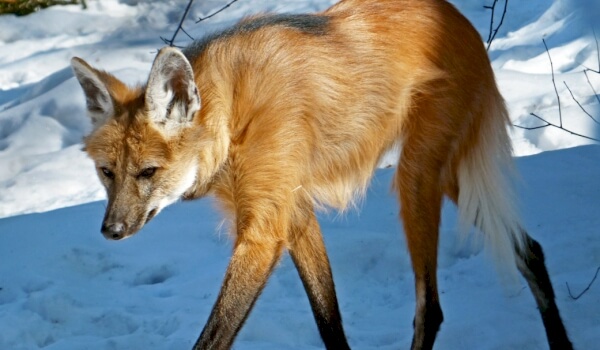
Photo: What a maned wolf looks like
Behind the way of eating the maned wolf — omnivorous. The term “omnivorous” means “to eat a variety of foods.” From this we can conclude that animals with this type of diet can eat food not only of plant origin, but also of animal origin, and even carrion (dead remains of animals or plants). This has its advantages, because such animals are unlikely to die of hunger, because they can find food in any place.
The basis of the diet of this wolf is food of both animal and vegetable origin. In frequent cases, these are small animals, such as spiders, snails, various insects, hares, rodents, birds and their eggs, armadillos, rats. Sometimes it can attack domestic animals (lamb, chicken, pig). There have never been cases of attacks on people. Also, he likes to eat various tasty fruits, bananas, roots or tubers of plants, guava, plant food, leaves. Bananas — it is their favorite fruit. They can eat over 1.5 kilos of bananas in one day!
If there is a river nearby, the wolf can catch various fish and reptiles. Doesn’t like to share food. Carrion, unlike other omnivorous animals, the maned wolf does not eat. An important component of the food of the maned wolf is one plant from the genus nightshade, which helps to destroy the giant parasitic worm in the intestines of the animal, known as the pile. It is known that such adult worms can reach 2 meters in length. They are life-threatening animals.
Before catching the prey, the wolf either drives it into a corner, or taps its paws and then suddenly attacks it. In frequent cases, if he lives near farms, he steals food. It is worth noting that his mouth muscles are not sufficiently developed, so most often he swallows prey whole. From this we can conclude why the maned wolf does not hunt large prey.
Peculiarities of character and lifestyle
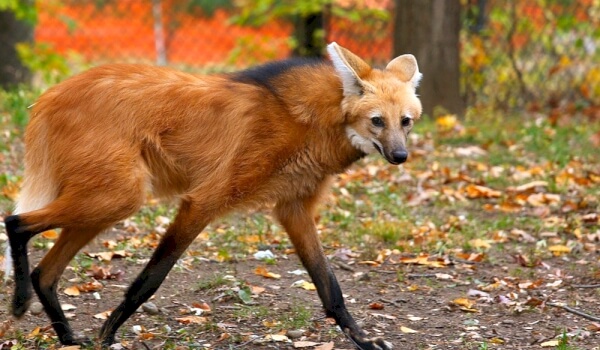
Photo: Aguarachay
The character and lifestyle of the maned wolf have not been sufficiently studied by scientists. But some of them are facts quite accurate. In the minds of many people, the wolf — very bad animal. But in fact, this is not always true. The nature of the maned wolf is calm, balanced, cautious. He does not attack people, but on the contrary, he tries in every possible way not to catch their eye. In the character of the wolf, the character traits of the fox are traced – cunning, deceit. This trait is especially evident when the wolf steals from farmers their farms.
And another very important trait is loyalty. A wolf lives with only one female throughout its life. Also, they like to be independent. This confirms the fact that they are not in packs, because the will for them comes first. When the beast is angry or aggressive, the mane around its neck stands on end. It gives the animal a more terrible expression.
The lifestyle of maned wolves is quite interesting – during the day they sleep, rest, bask in the sun, play, and in the evening or night they go hunting. They live alone, not in packs. The activity of males is much higher than that of females.
Females and males hunt or rest separately from each other. Only during mating seasons do they spend a lot of time together. Maned wolves often communicate using certain sounds.
Here are some of them:
- Loud throat barking – indicates sunset;
- Loud long howl – communicate with each other over long distances;
- Deaf grunt – scare away enemies;
- Snort – warning of danger;
- Single howl – maintain communication over short distances.
Social structure and reproduction
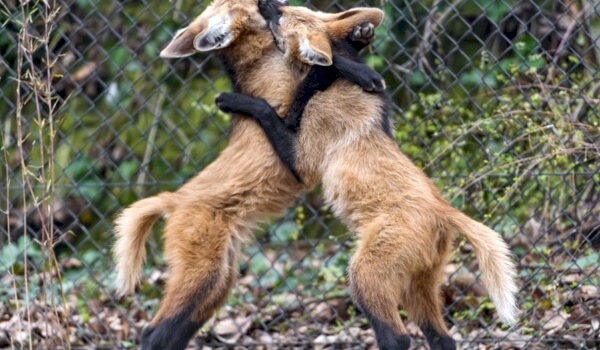
Photo: Maned Wolves
As noted above, maned wolves live with only one female throughout their lives, unlike other animals. The couple occupies an area of approximately 30 square meters for themselves, which cannot be approached by others. To mark their territory, they mark it with their urine or small pieces of feces in certain areas. And at the same time, only wolves understand such a smell. A person will never in his life be able to understand this.
At one year, maned wolves fully reach sexual maturity, but at two or three years they are considered to be fully ready to create their own family. The period of mating games, reproduction falls in the middle of autumn, the beginning of winter. Estrus in females lasts from April to early June, and pregnancy for 2 months (63 days). In most cases, two to six puppies are born (as newborn wolves are called).
Newborn cubs are born very tiny, with an approximate weight of 200 — 400 grams. Their body has a dark black or gray color and a small light tail. For the first nine days they cannot see anything. A month later, their ears are almost completely formed, a characteristic brown body color appears along with a loose fur coat, teeth erupt. Until the age of three, the mother feeds her children with milk, and soft food, which she first chews herself and then spits out.
Both the wolf and the she-wolf are engaged in raising their children. The male actively helps the mother in the upbringing and maintenance of the family. He gets food, scares away enemies from babies, teaches them the laws of nature and plays various games with them.
Maned wolf’s natural enemies
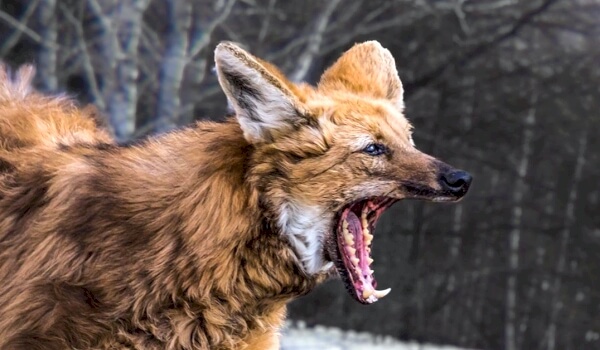
Photo: Guara
Scientists have not been able to identify the real enemies of the maned wolf in the real world. Most likely they are not, because they are friendly and try not to get into the eyes of large predators. But we are unambiguously sure that its main enemy is man and his negative activity. At the same time, people do not need the wool or meat of this animal, the reasons are deeper. Here are some of them:
- Farmers kill the wolf just because it steals their pets;
- Some African peoples use its skin and eyes as a talisman for medicinal remedies;
- Poaching;
- Food shortage, starvation, disease;
- People are cutting down trees, polluting water and air, taking their territories.
Population and species status
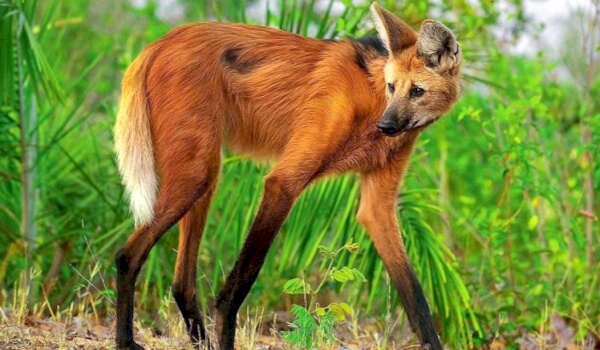
Photo: Maned wolf from the Red Book
The population of the maned wolf has reached an all-time low in recent years. According to experts, there are no more than ten thousand adults left in the world. And in Brazil there are only about 2000 of them. The status of the maned wolf is listed in the International Red Book as “a species that is endangered.” Until 2 centuries ago, it was a popular species of wolf in the territories of Uruguay.
It is worth noting that maned wolves are prone to such diseases as the plague and others no less serious. It is they who pose a threat to the life of these animals to the same extent.
Protecting the maned wolf
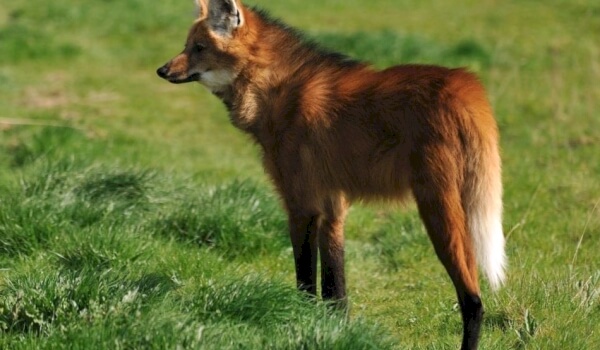
Photo: Wolf Guara
In Brazil and Argentina, a law has been introduced to ban the hunting of the maned wolf. Although many people continue to ruin his life. In 1978, scientists began to conduct research to understand whether it is possible to prevent the abrupt disappearance of this animal.
Also, social groups of fighters for the life of animals help animals in every possible way: they feed, treat. The maned wolf can be seen in zoos and sometimes even in people’s homes. Surprisingly, they can even be tamed. Here he is safer, but still, any animal will be better off in the wild. Moreover, wolves love to be independent. It would be very good if the life of maned wolves was no longer endangered.
Summing up, I want to emphasize that we must take care of the wild world of our nature. Many animals disappear precisely because of dangerous human activities. Without thinking, they destroy their habitats, kill, pollute the water. Therefore, we must be very respectful of our younger brothers and not interfere in their lives, otherwise the entire planet will die. You must always remember that in nature everything is interconnected, not only a maned wolf, but even every pebble has its own meaning.


